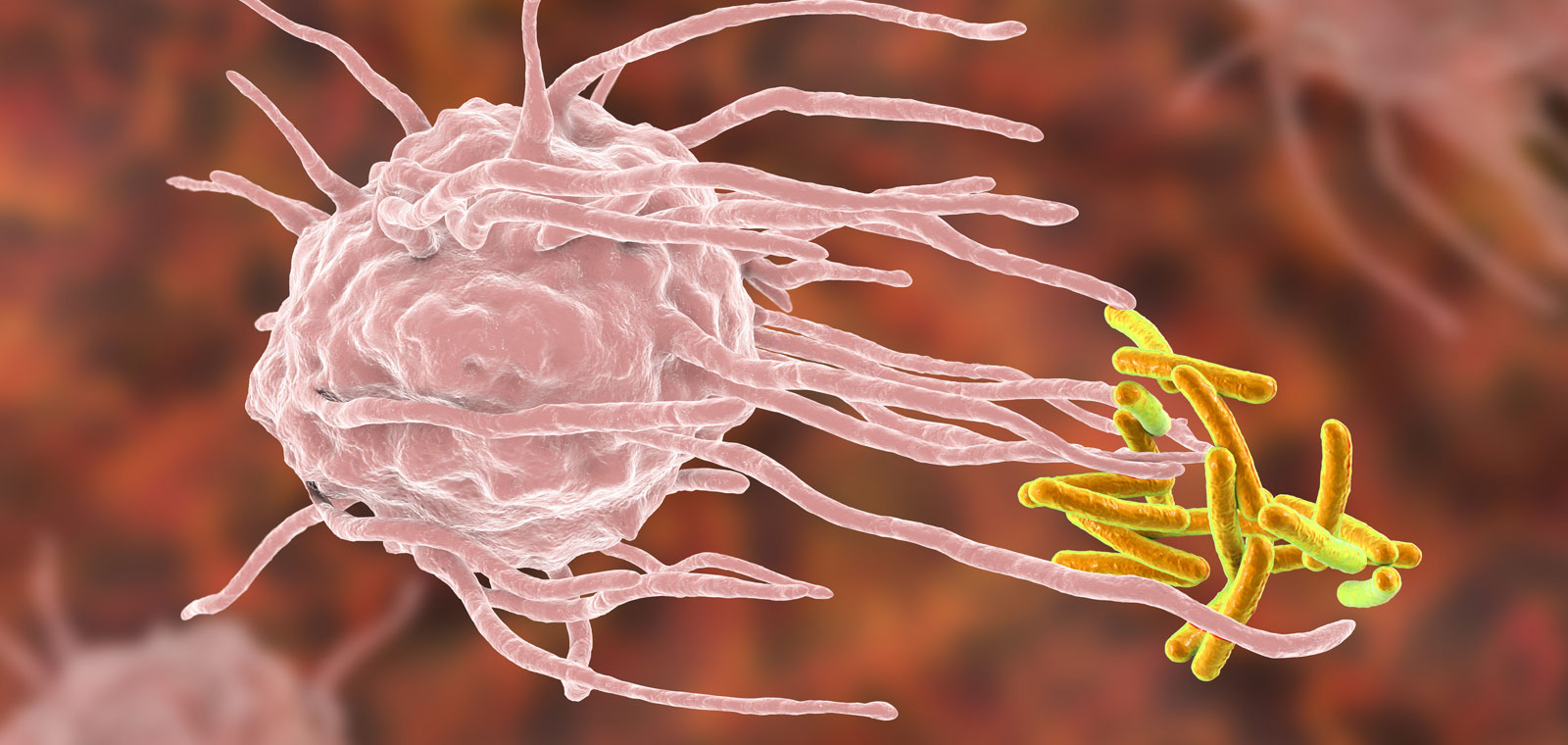
A recent discovery by BPRC researchers offers greater insight into the development of tuberculosis (TB). The team identified specific immune responses that may either help the body defend itself against the infectious disease or exacerbate the symptoms. The results offer a starting point for further research into human risk factors.
The recent findings came about by comparing the immune responses of two monkey species, both of which showed a different disease development process after having been infected with the TB bacteria (Mycobacterium tuberculosis).
Active or latent tuberculosis infections
A tuberculosis infection can be active or latent. Those with an active infection develop symptoms soon after being infected. However, infection does not immediately lead to illness in everyone. In fact, a large portion of those infected by the disease do not develop any symptoms. This is referred to as ‘latent tuberculosis infection'.
Those with a latent TB infection can carry the disease for years without noticing any effects and still become sick at a later time. It is not entirely clear why some people are at risk of becoming ill immediately, while others can keep the infection under control. A clear understanding of the processes contributing to disease development would be extremely helpful in developing improved diagnostics. The ability to determine whether a patient has an active or latent infection will enable us to provide the most suitable form of treatment.
Variances in disease development
Just like in the human body, the development of the tuberculosis bacterium also differs in monkeys. We already knew that rhesus macaques are highly susceptible to TB, and quickly become extremely ill. Cynomolgus macaques, on the other hand, display fewer symptoms after infection and, like humans, are capable of developing a latent infection. A comparison of the two species' immune responses to TB infection could help us identify responses that explain the differences in disease development. Our tuberculosis team applied this scientific method to compare the two macaque species and found that, although their susceptibility to tuberculosis infection is comparable, certain immune responses – so-called risk factors – would appear to explain the varying degrees of disease susceptibility.
Starting points for further research
As the researchers demonstrated, the two species' TB-specific responses during or immediately after infection – especially by the congenital immune system – differ. Whereas the highly sensitive rhesus macaques were found to have more 'suppressive' immune responses, the cynomolgus macaques mainly showed 'activating' immune responses. It would appear that the early suppression of such congenital responses contributes to more active disease development, whereas early activation may have a protective effect.
The results serve as a starting point for further research on human risk factors and could help us gain greater insight into early disease development processes. For the full results of the study, see this month's article in Frontiers in Immunology.

